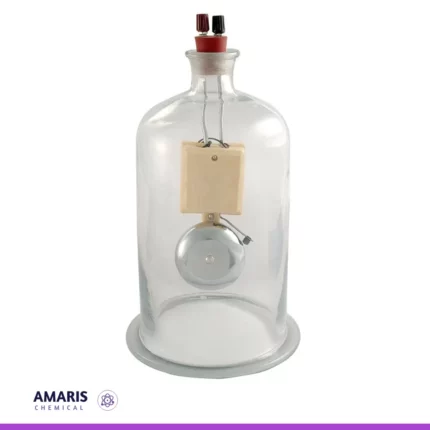“bare enamelled copper wire” has been added to your cart. View cart
“bare enamelled copper wire” has been added to your cart. View cart
Description
Bar breaking apparatus is used to show the thermal expansion and contraction of metals.
Shipping & Delivery
Related products
Absorption Tower
KSh0.01
A laboratory absorption tower is a scaled-down version of an industrial absorption tower used for experimental purposes within a laboratory setting. It is a specialized piece of lab apparatus designed to investigate the principles of gas-liquid absorption or scrubbing processes under controlled conditions.
Typically, a lab absorption tower consists of a glass or transparent column filled with a packing material or trays to facilitate the gas-liquid contact. It is equipped with inlet and outlet ports to introduce the gas stream and remove the treated gas after absorption. Additionally, there are ports or connections to introduce the liquid solvent and monitor its flow rate. The tower may also have temperature and pressure control mechanisms to simulate specific conditions relevant to the experiment.
Laboratory absorption towers are essential tools for researchers, chemists, and engineers to study the behavior of gases and liquids during absorption processes, optimize process parameters, and assess the efficiency of different solvents or packing materials. These experiments contribute to the development and improvement of industrial-scale absorption systems and help in solving environmental challenges related to air and gas pollution.
Aspirator Bottle Glass
A laboratory aspirator glass bottle, also known as a vacuum aspirator bottle or a vacuum filtration flask, is a specialized glass container used in scientific laboratories for various applications. It is designed to create a vacuum or negative pressure, which allows the filtration of liquids through a porous medium like a filter paper or a membrane.
The bottle typically has a conical or pear-shaped body with a sidearm or neck near the top. This neck is where a rubber or silicone stopper is inserted, allowing for the attachment of tubing or a hose to connect to a vacuum source or water aspirator. (Available in 2.5l,5l,10l,)
Laboratory aspirator glass bottles are commonly used in vacuum filtration processes to separate a solid precipitate from a liquid solution. When connected to a vacuum source, the air inside the bottle is removed, creating a pressure difference that draws the liquid through the filter, leaving the solid behind on the filter paper.
These bottles come in various sizes to accommodate different filtration needs and are an essential tool in many research, analytical, and quality control laboratories for tasks like separating particulate matter, sterilizing solutions, and performing various filtration techniques. They are often made of durable borosilicate glass to withstand the pressure changes and chemical interactions that may occur during laboratory operations.
Atomic Model Set
KSh0.01
A lab atomic model set is a collection of physical models and materials designed to represent the structure of atoms and molecules. It is commonly used in educational and scientific laboratory settings to visually demonstrate the arrangement of protons, neutrons, and electrons within an atom, as well as the bonding patterns between atoms in molecules. These sets typically include colored balls of various sizes representing different types of atoms, as well as connectors or magnets to simulate chemical bonds between them. The purpose of these sets is to help students and researchers better understand the principles of atomic and molecular structure in a tangible and interactive way.
bare enamelled copper wire
KSh0.01
bell in vacuum
KSh0.01
A "bell in vacuum" apparatus is a scientific setup used to demonstrate the effects of reduced air pressure (vacuum) on sound transmission. It typically consists of a bell or sound-producing object enclosed within a sealed chamber from which air has been removed, creating a low-pressure environment. This apparatus is designed to illustrate how sound travels differently in a vacuum compared to in normal atmospheric conditions, highlighting the role of air molecules in sound propagation.
bell in vacuum with air pump with plate
KSh0.01
A "bell in vacuum" apparatus is a scientific setup used to demonstrate the effects of reduced air pressure (vacuum) on sound transmission. It typically consists of a bell or sound-producing object enclosed within a sealed chamber from which air has been removed, creating a low-pressure environment. This apparatus is designed to illustrate how sound travels differently in a vacuum compared to in normal atmospheric conditions, highlighting the role of air molecules in sound propagation.
















